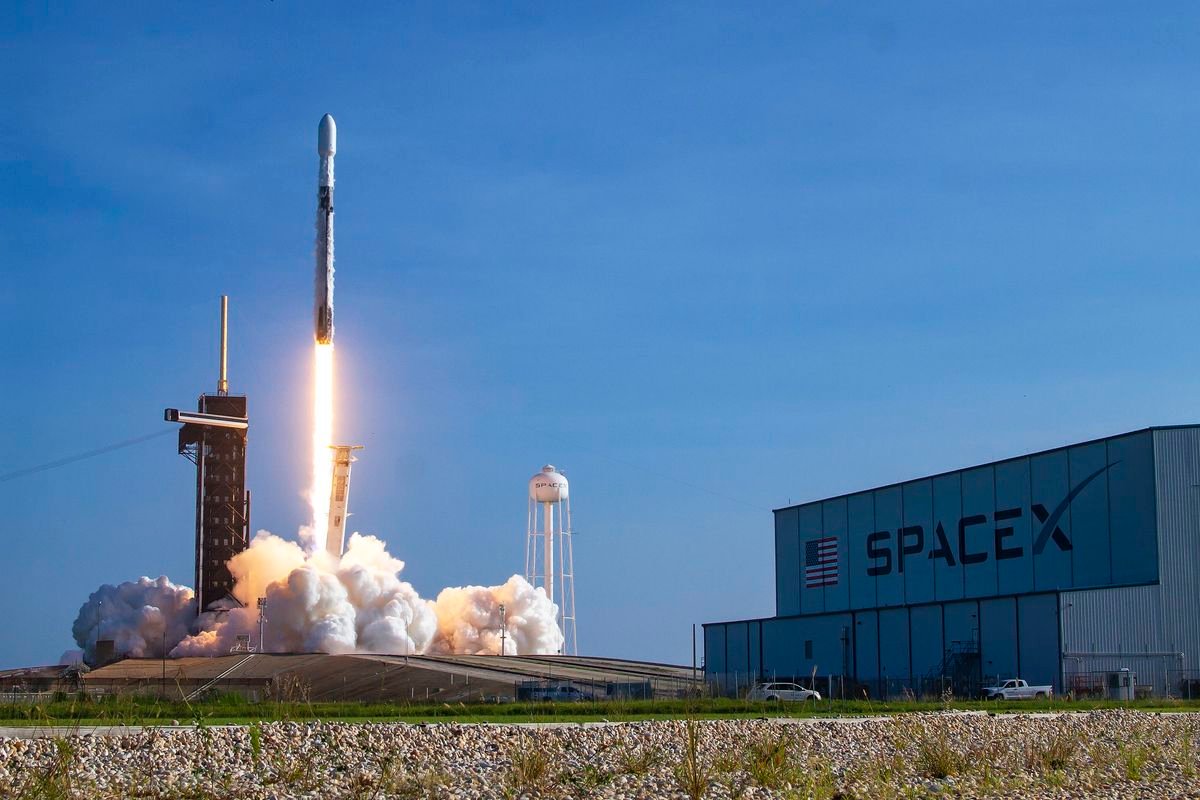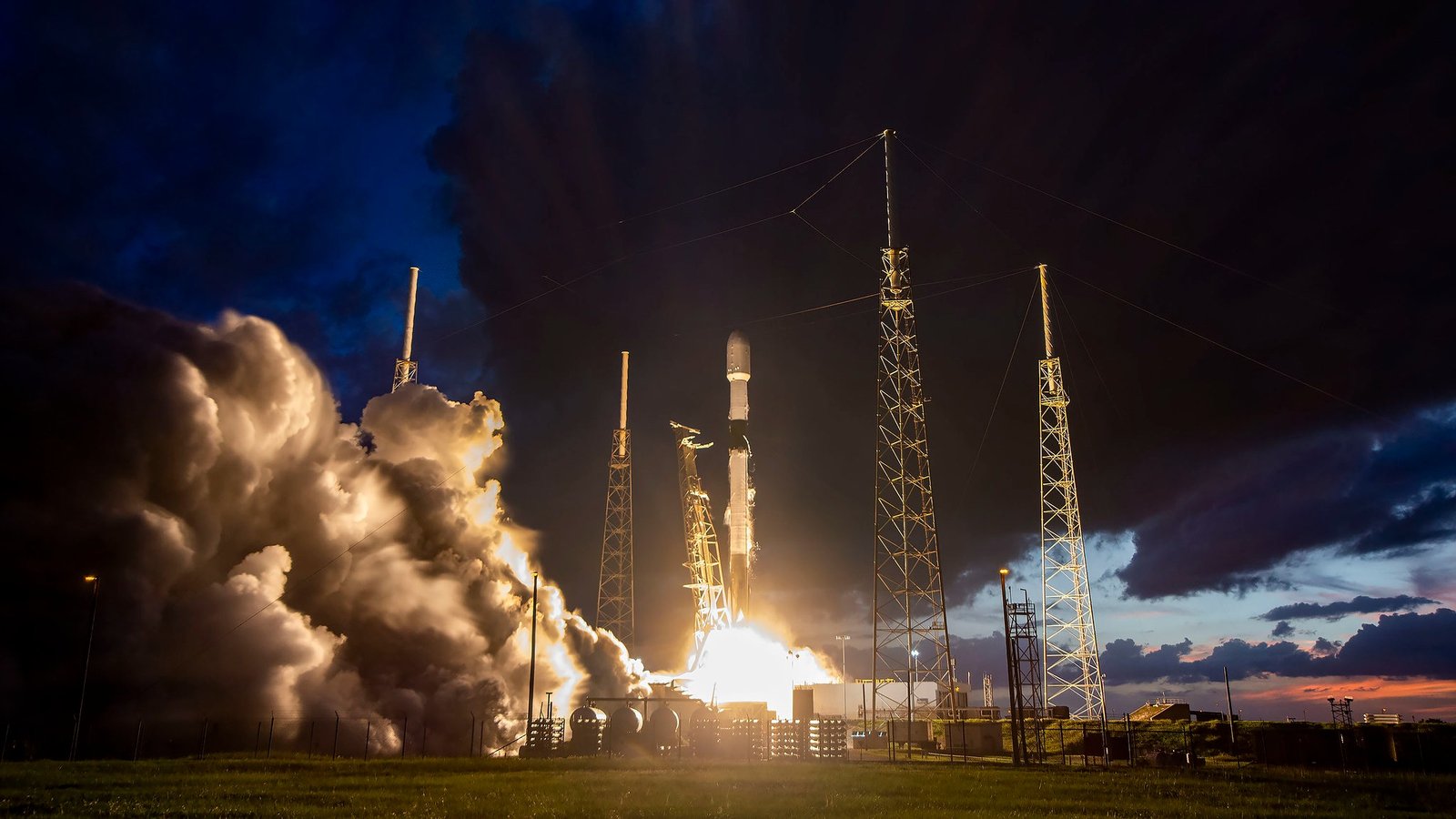Florida, April 30, 2025 – SpaceX achieved another major milestone in its ambitious Starlink internet satellite program by launching 23 additional satellites into low Earth orbit on Monday night. The mission, conducted from NASA’s Kennedy Space Center in Florida, marked the company’s second Starlink launch in just one day and brought SpaceX to a total of 50 launches in 2025 so far. With these 50 launches, SpaceX continues to dominate the commercial spaceflight sector and push the boundaries of rapid launch capabilities.
Florida Launch Marks SpaceX’s 50th in 2025
At precisely 10:34 PM EDT (8:04 AM IST), a Falcon 9 rocket lit up the night sky as it lifted off from Florida, carrying a payload of 23 Starlink satellites. Notably, 13 of these satellites feature SpaceX’s cutting-edge direct-to-cell technology, a feature designed to significantly improve global mobile connectivity by linking directly with unmodified cell phones. This innovation is expected to be a game-changer in providing coverage to remote and underserved areas.
Just eight minutes after launch, the rocket’s reusable first stage made a pinpoint landing on the droneship “A Shortfall of Gravitas” stationed in the Atlantic Ocean. The flawless recovery once again demonstrated SpaceX’s mastery in booster reusability, a core element of its cost-saving launch model.
Earlier Launch from California Sends 27 Satellites
Only hours before the Florida liftoff, SpaceX launched another batch of 27 Starlink satellites from California’s Vandenberg Space Force Base. The West Coast launch also used a Falcon 9 rocket, reinforcing the company’s rapid launch cadence and logistical prowess. With two successful missions completed in under 24 hours, SpaceX continues to redefine industry standards for turnaround time and operational efficiency.
Starlink Expansion Powers SpaceX’s 50 Launches in 2025
The inclusion of direct-to-cell technology in over half of the satellites deployed during the Florida mission signifies SpaceX’s shift toward enhanced mobile internet access. These satellites are part of a strategic move to offer cellular coverage in areas where conventional infrastructure is either unavailable or unreliable. The system will work in partnership with existing mobile carriers, extending connectivity to users even in the most remote corners of the globe.
The upper stage of the rocket deployed the 23 satellites into orbit roughly 65 minutes after launch. These additions bring the total number of operational Starlink satellites to over 7,200, further expanding what is now the world’s largest satellite constellation.
SpaceX Sets the Pace with 50 Launches in 2025
The latest dual-launch feat brings SpaceX’s total Falcon 9 missions in 2025 to 50, with 33 of them dedicated solely to expanding the Starlink network. The rapid deployment schedule reflects Elon Musk’s vision of delivering high-speed, low-latency internet to every part of the planet.
Perhaps more impressively, SpaceX has continued to rotate between newly built boosters and previously flown ones, demonstrating its unmatched efficiency in managing a reusable rocket fleet. The company’s ability to conduct back-to-back launches—both from opposite coasts and with separate teams—underscores a level of reliability and scalability previously unseen in commercial spaceflight.
What’s Next for Starlink?
As Starlink continues to grow, SpaceX plans to introduce more satellites equipped with direct-to-cell features and laser links for enhanced inter-satellite communication. This will reduce dependence on ground stations and enable continuous, uninterrupted coverage worldwide. The company also aims to increase the number of launches in the latter half of 2025, further cementing its dominance in the global satellite internet market.
With consistent technological advancements and an aggressive launch schedule, SpaceX is not only transforming space logistics but also playing a pivotal role in bridging the digital divide on Earth.





I just like the helpful information you provide in your articles